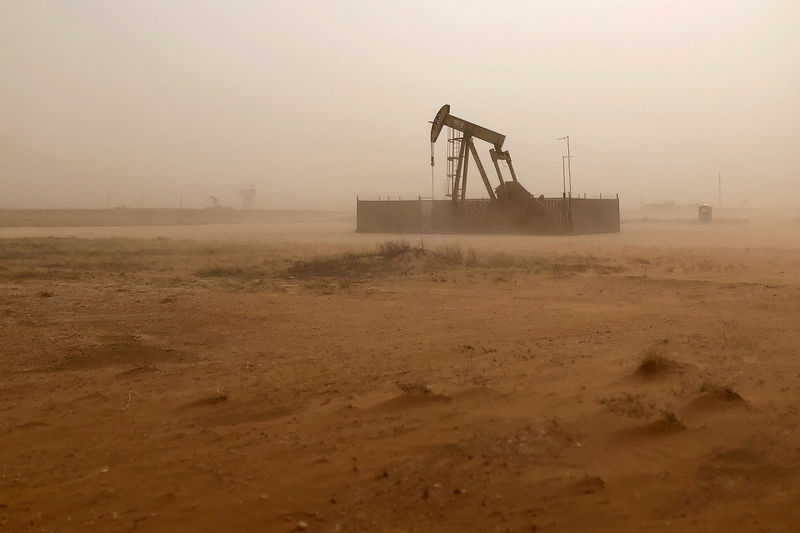 © Reuters. FILE PHOTO: Pump jack lifts oil out of well during sandstorm in Midland
© Reuters. FILE PHOTO: Pump jack lifts oil out of well during sandstorm in MidlandBy Henning Gloystein
SINGAPORE (Reuters) – U.S. oil prices on Friday held around three-and-a-half year highs touched the previous day as a Canadian production outage disrupted the North American market.
International oil markets also remained firm as looming sanctions by Washington against Iran are expected to lead to a sharp drop in supplies from the OPEC-member.
U.S. West Texas Intermediate (WTI) crude futures () were at $73.17 a barrel at 0049 GMT, down 28 cents, or 0.4 percent from their last settlement. WTI on Thursday hit its highest since November 2014 at $74.03 per barrel.
Brent crude futures () were at $77.79 per barrel, down 6 cents.
Traders and analysts said Friday’s dip was more a result of profit-taking than any market fundamentals, with WTI still up by more than 18 percent from June lows.
Greg McKenna, chief market strategist at futures brokerage AxiTrader said this week’s crude price rises had “exhausted the bulls.”
North America’s oil markets have tightened significantly as an outage of Canada’s Syncrude has locked in over 300,000 bpd of production. The outage is expected to last at least through July, according to operator Suncot (TO:).
Outside North America, oil prices have been rallying for most of 2018 due to record demand and voluntary supply cuts led by the Middle East dominated producer cartel of the Organization of the Petroleum Exporting Countries (OPEC).
Oil demand has been chasing records for most of the year, and OPEC has said it will raise output in order to meet demand and replace crude from unplanned disruptions.
Looming U.S. sanctions against OPEC-exporter Iran are also fuelling Brent prices.
Unplanned supply disruptions from Libya to Venezuela have helped to further tighten the market.
Fusion Media or anyone involved with Fusion Media will not accept any liability for loss or damage as a result of reliance on the information including data, quotes, charts and buy/sell signals contained within this website. Please be fully informed regarding the risks and costs associated with trading the financial markets, it is one of the riskiest investment forms possible.
Source: Investing.com






























